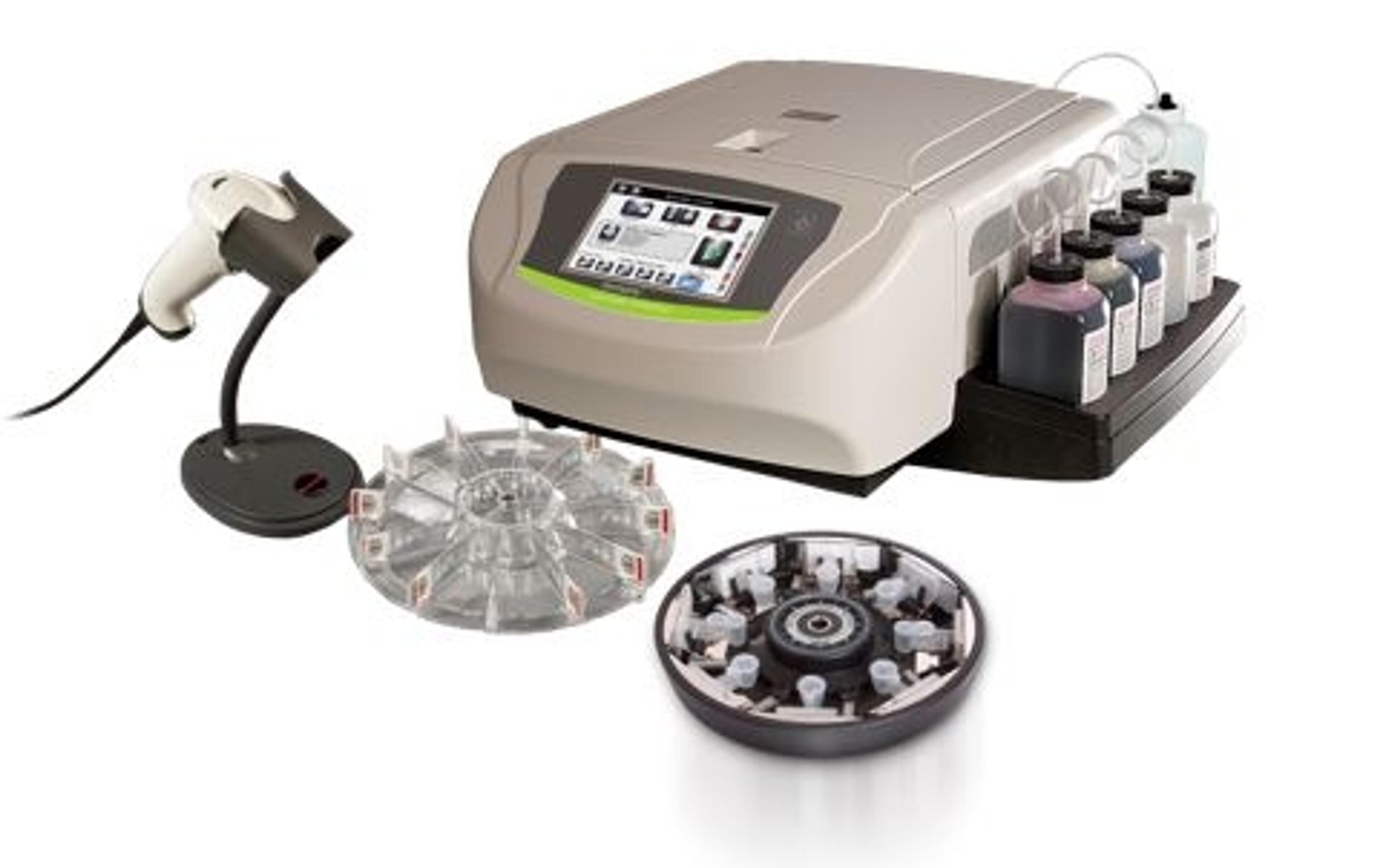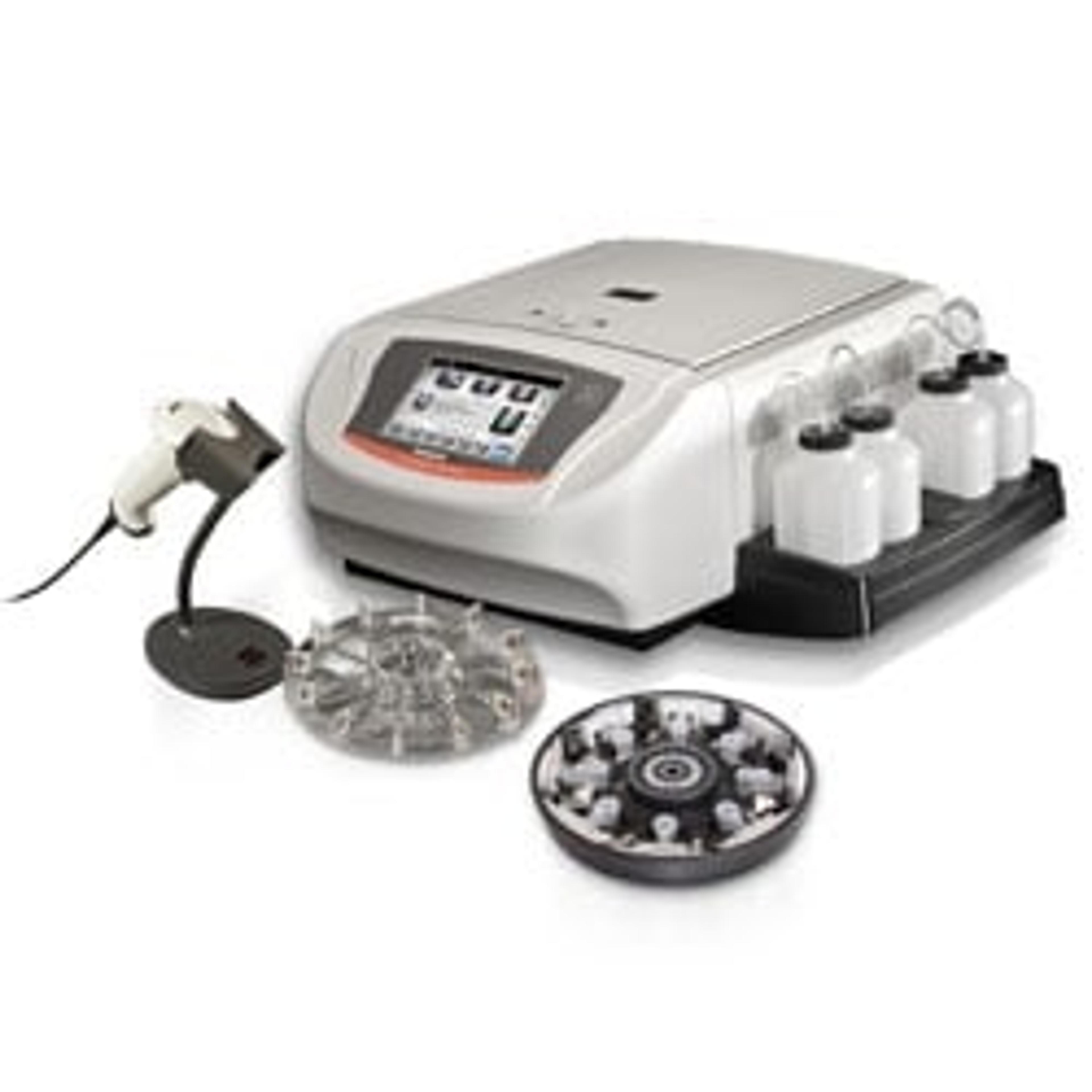Accelerate your slide staining workflow without cross-contamination – webinar highlights
Watch this on-demand webinar to find out how Aerospray technology could elevate your lab’s performance
4 Sept 2020
Human error can significantly inhibit laboratory processes, limit expansion, threaten laboratory credibility, and may result in damaging loss of time and resources. In this webinar, Patti Nelson and Elizabeth Lasley, ELITechGroup, explore a staining process using Aerospray slide stainers to speed up your workflow and reduce errors, with no cross-contamination.
Aerospray® slide staining technology has earned recognition, over its 35-year lifespan with nearly 30 patents, for its performance and reliability. This webinar explores how Aerospray technology — the only dual-purpose stainers with cytocentrifugation — could make all the difference in your lab.
Read on for highlights from the Q&A discussion at the end of the live webinar or register to watch the full webinar on demand >>
Watch Webinar NowQ: What makes Aerospray staining different from other staining methods?
PN: What makes Aerospray staining unique is that you can apply a specimen on your slide, put the slide in the carousel in the instrument and apply fresh stain directly in an atomized mist. You're more efficient with your stain; and it stains quickly. The stained and dried slide can be taken from the instrument right to the microscope. You're saving so much time. Using hand staining methods or any other method, you have to wait for the slides to dry, or you have to wait for it to go through the whole staining system. With Aerospray staining, you can put in an unstained specimen in the carousel and when finished you're ready to go to the microscope within three to four minutes, depending on your program; or it can take as long as 15 minutes, depending on how you choose to stain your slides. It’s quick, it's fast, it's very efficient on the reagent usage, and you don't have to worry about getting rid of the waste, because everything's contained.
Q: What are the chances of blocked nozzles and their effect on the staining, and how would you fix or replace these?
PN: If you have a blocked nozzle, you'll see there will be a deficiency in the overall staining when completed. Within the staining program, we have an alcohol purge that cleans the nozzles during and after the staining cycle. We do recommend that you do a hub pattern test. The hub pattern test is a quick test before you do your staining each morning. Using a paper towel, you spray some stain through each nozzle to make sure the nozzles are spraying properly. Usually, you won't have an issue - it's just if the machine has been sitting idle up to weeks or months that you might have an issue. It is very easy to clean the nozzles. It takes less than two minutes. Generally, you should check the nozzles first for anything that will cause an issue with your staining.
EL: If you have let the nozzles sit for a long time, we do sell a novel cleaning solution that will allow you to clean it. Then just keep up on your maintenance, and it won't clog very easily. Most times if you keep up on your weekly maintenance, you won't have any problems at all.
PN: When you purchase an instrument, you receive a preventative maintenance kit and instructions on how to keep the instrument up and running. If you follow the instructions for the preventive maintenance kit and chart, then you will not have a problem. Maintenance is very quick and simple. For example, daily maintenance is checking the nozzles to make sure they are spraying before you start. There is daily, weekly and monthly maintenance that is recommended. If you have a poor spray pattern from the nozzle you simply take them apart and clean them monthly or as often as you see fit.
Q: Can the rotors be changed? For example, if you have one centrifuge with two different rotors?
PN: The rotors are interchangeable between all of the instruments. You can use the same carousel on Aerospray Gram Series 2 or Aerospray Hematology Pro Series 2. They're all the same. You can use the 12 or the 30 — the instrument will determine whether it's a 12 or 30 and know the programming.
Q: What is the minimum volume of sample for the Cytopro, and can I stain different specimens in one batch?
PN: We have a paper we published, and it explains the best volume to be used for the best recovery when using the Cytopro chambers. It depends on the cellularity of the sample. If there are a lot of cells, usually people in the cytology laboratory or in hematology, gram or immunology use a transfer pipette, and usually, a drop from a transfer pipette is about 40 microliters. We say that you can use one drop sample plus four or five drops of diluent. A total volume of 200 to 300 microliters is needed to get a nice, even flow, and so you get an even monolayer on the glass slide or microscope slide. You don't end up with all the cells being sucked into the filter pad. You want the cells to be a monolayer. You need to make sure you have enough fluid to get the cells to adhere to the microscope slide and that's by using a 200 to 300 microliter volume of total sample. For example, if it is a high cellular sample, you can do a dilution in the chambers themselves. You will use one drop of sample, with four or five drops of diluent, or two drops of sample with three to four drops of diluent, and so on. The total volume should be 200 to 300 microliters, but it could be made up of one, two, three, or the total volume of sample, depending on the sample characteristics itself.
Q: What is the function of blocking slides?
EN: If you have less than a full carousel, the way the spraying is set up is to start the spray about one and a half units, in terms of a distance, in front of the first slide. If you put the blocking slides there, it prevents the first slide with the specimen from getting excess stain. The blocking slides are just there to be a temporary slide, when staining less than a full carousel, so that way your stained slides are all consistent and they all get the same amount of reagent.
SelectScience runs 3-4 webinars a month across various scientific topics, discover more of our upcoming webinars>>



